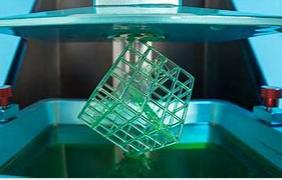Physicists at Ural Federal University will use 3D printers to print unique magnets, magnetic systems and soft magnetic components. The samples made with this printer can be used in almost any field from medicine to space. For example, it can be used by robotic surgery assistants to unclog arteries and veins or place stents. According to Alexander Volegov, an associate professor in the Department of Magnetism and Magnetic Nanomaterials at the Ural Federal University, scientists are now deciding which magnet to start printing first.
"These will be magnets based on samarium or cobalt compounds. They can be used in submarines, space stations, ships. That is, in areas where temperature changes are very intense, we need magnets with the following characteristics: stability.Otherwise, it will be simple magnets based on neodymium, iron and boron alloys, which can work at room temperature. Such magnets are used in smart phones, hard disk drives and automotive engine sensors. For example, such magnets are installed in smart phones. The latest generation of Tesla electric motors. "
Researchers want to make small magnets. The only German printer model on the world market met their requirements. There are few printers in the world that can print from metal powder and have open settings for printing parameters. These printers are mainly used in research and development organizations.
Alexander Voregov said: "Our model may be the only model in the world that achieves our goals." "The printer uses selective laser melting and selective laser sintering techniques to obtain samples from metal powder. In the first In this case, the powder particles are completely remelted. In the second case, they are slightly melted near the surface. About 20 powder particles are melted. In scientific papers published in the world today, their authors have tried Printing magnets. Usually, the selective laser melting can be calculated with the fingers of one hand."
At this stage of the work, the printed sample needs to be post-processed (and the scientist magnetizes the part after printing). In order for the printer to immediately print magnets with specific properties, it is necessary to let it use specific powders and print the required samples. According to Alexander Volegov, this may take up to six months or even years.
Scientists printed three small parts as test samples to verify the accuracy of the printer. The first one was sent to Germany for other equipment configuration (only one percent in a specific area). The second is the planetary herringbone gear, which is an inseparable system that can only be obtained through 3D printing. The third detail is the lower floor of the tower, with spiral staircases and railings.




